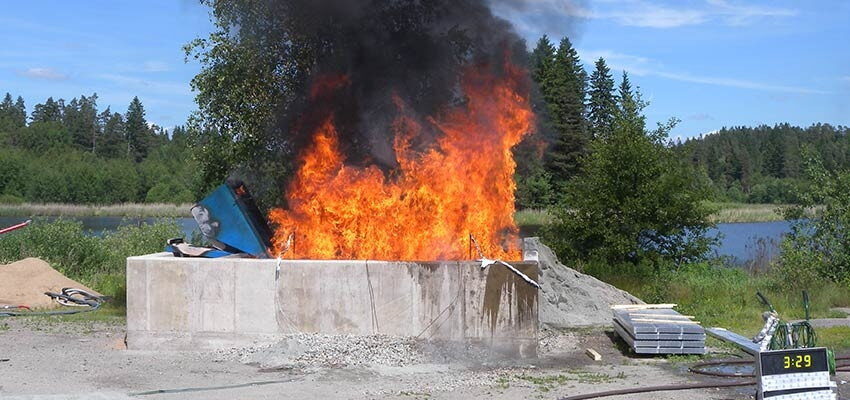
Fire testing for transformer pit fire protection
On the use of alternatives to rocks for passive fire protecton Transformer pits are conventionally filled with rocks in order to achieve passive fire safety...
byJohan Lindström & Michael Försth

On the use of alternatives to rocks for passive fire protecton
Transformer pits are conventionally filled with rocks in order to achieve passive fire safety in the event of an oil leak from the transformer. Other solutions also exist but there is no well defined test method that allows an assessment of the fire performance. In this brief article, such a test is presented together with test results for an alternative system where profile planks are used instead of rocks.
Keywords: transformer pit, transformer oil, transformer fire, profile plank, experimental measurements
Introduction
Burning transformer oil that has been ignited due to a transformer rupture can be a large problem and the fire can case huge damage to the surroundings. To handle the leaking oil a transformer is often placed above a concrete pit (transformer pit) to capture all the leaking oil. If the leaking oil is ignited, the fire can effectively be extinguished by using different systems in the transformer pit. The traditional way of improving the fire safety of transformer stations is to fill the transformer pit with rocks. The purpose of these rocks is that, in the event of an incident involving leaking and burning of transformer oil, the oil should be cooled as it comes into contact with the stones and that the limited amount of oxygen would help to avoid a long lasting fire when the oil runs into the transformer pit. Stone filled transformer pits can make it hard for service personnel to work on the transformer. It can also be expensive to sanitise the stones after leaking oil. An alternative to filling the pit with stones is to cover it with a profile plank. A profile plank is in this case a product based on a steel grid that is a kind of floor inside the transformer pit. The steel grid needs to have holes that will drain the leaking oil down into the transformer pit. The tested product is shown in Figure 1. This solution has the advantage of allowing the entire volume of the pit to be available for rainwater and for any oil, instead of having most of the volume filled with stones. Another advantage is that it is easier to perform service work on the transformer station with a smooth profile plank as the base instead of stones. It is also easier to clean and restore the transformer pit after an oil leak.
Today no technologically neutral description of the requirements for extinguishing burning oil in a transformer pit is available. Swedish standard SS 421 01 01 states:
“Preferably arrangements that contribute to extinguishing the fire in the leaked liquid shall be used, for example the use of a layer of stones (approximately 300 mm deep and with a grain size of about 40/60 mm) that extinguishes the burning liquid that enters the layer.”
A search through the literature, both national and international standards and guidelines, finds that several documents describe the problems of burning oil, but none of them states specific requirements for fire extinguishing. Rather, the documents typically contain guidelines similar to the translated citation from SS 421 01 01 above. SP Fire Research has, therefore, performed fire tests simulating a transformer failure by tipping burning transformer oil into a transformer pit covered by profile planks.







